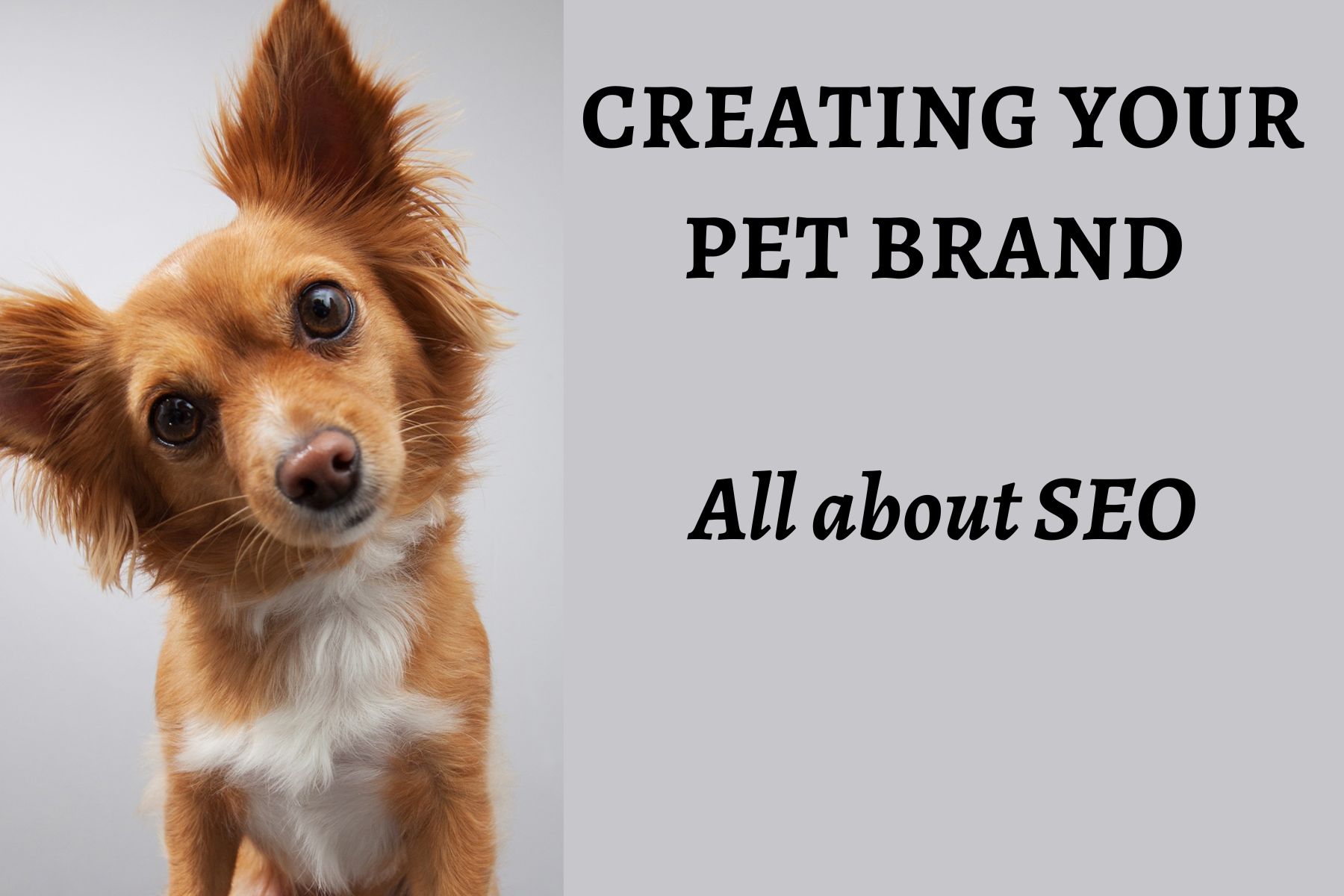When you are creating or revitalising your pet brand, SEO is one of the most important areas to work on. Let’s take a look at what you need to know about SEO as a pet business owner!
P.S, have you seen our other two amazing posts in the ‘Creating your Pet Brand’ series? If not – why not? Here they are in case you missed them:
Understanding the power of SEO for your pet brand
Search Engine Optimization (SEO) is not just about ranking high on Google. It’s about reaching your audience, speaking their language, and presenting them with solutions when they need it the most. For pet brands, this means being there when a pet parent is searching for the next best treat, toy, or service for their furry friend.
1. Find out what your audience is looking for
Your pet brand’s success in SEO begins with understanding the keywords your potential customers are using. Tools like Google Keyword Planner or SEMrush can offer insights into search trends and terms related to your products or services.
2. Answer your audience’s questions with high-quality content
Content isn’t just about putting words on a page; it’s about addressing concerns, offering advice, and establishing your brand as an authority. Focus on what your audience is searching for. This is where experts like us come into play. Search engines like Google even rank your page more highly when you use pet experts to write your content.
3. Check your on-site SEO
Make sure the technical elements of your website are in order. This includes meta descriptions, title tags, and alt-text for images. These might seem minor, but they play a crucial role in how search engines interpret the content of your site.
4. Build backlinks
Search engines build up a picture of how trustworthy your site is by looking at who is directing people to you. If other websites link to you, they’re saying you have good content on that topic, which Google takes as a positive sign.
Reaching out to other pet-related blogs, services, or product sites and creating collaborative content can help in building a reputable link profile. You can also use journalists to help you build backlinks. This not only enhances your SEO but builds your brand image and positions you as thought leaders in the pet industry. (Don’t forget to take a look at our Media Enquiry Response Service if you’re struggling to sound authoritative when responding to journalist queries.)
5. Don’t forget local SEO
When creating a pet brand, it’s easy to get carried away with all things digital and forget the importance of your geographical location. Local SEO is important if you have a physical store or offer services in a particular area. This type of pet brand SEO ensures that your pet business is visible to those directly around you, building both online and foot traffic.
Start by creating a Google My Business account, ensuring all details from location to operating hours are accurate. Encourage satisfied customers to leave reviews, and make sure your website clearly states your location and services. Participating in local pet events or collaborating with other local businesses can also boost your local presence both online and offline.
Conclusion: Pet brand SEO is easier than it sounds!
When it comes to starting a new business, there’s plenty to be getting on with. Your pet brand will benefit from great SEO now and in the future, so it’s worth putting in the effort from the beginning. Remember, it is a journey, not a one-time task. It requires patience, strategy, and continuous learning. However, with the right focus and content strategies, your dog or cat brand can become the go-to resource for pet owners seeking products or information.
Remember, while you focus on building your brand, having a team of dedicated expert content writers can alleviate the pressure and ensure your content meets your customer’s expectations, as well as Google’s requirements for E-E-A-T. When you’re ready to take your pet brand’s content to the next level, we’re here to help.
-
Why good pet copywriters can’t be replaced by AI
Ahhhh! AI is coming to steal our jobs! Isn’t it? Well, no. Good pet copywriters can’t be replaced by AI. A copywriter gets to know your brand the way AI… Read more
-
Pet Marketing Magic: The Role of Pet Professional Copywriting
Digital marketing is crucial to the success of most companies these days. But with so much information and competition on the internet, how do you get people to look at… Read more
-
Veterinary copywriter secrets: 9 ways to make pet parents into loyal customers
Pet owners are hungry for knowledge. They want to know more about their pets and what’s best for them – their health, their behaviour, how to look after them, and… Read more
-
SEO for the vet industry – what you need to know in 2024
Whether you’re a mobile vet practice, a small branch, or part of a huge corporate group, SEO is important. But they didn’t cover SEO at vet school! We’ve explained SEO… Read more
-
Mastering Marketing for Pet Business Growth
Pet ownership is growing, meaning an increased demand for veterinary care and pet information, products, and services. While this might sound like the perfect opportunity to hold off on spending… Read more
-
Google’s new update (and what it means for pet businesses)
Everyone who is anyone in the world of SEO is talking about Google’s new core update. It started last week, and is expected to take up to a month to… Read more
-
4 reasons vets make the best animal copywriters
Pet business website? Check. Products and services decided on? Check. But how do you get people through your (virtual) door to see what you have to offer? Well, that’s where… Read more
-
How to hire a veterinarian for content marketing
If you want to provide a professional, reliable source of information for your animal-loving audience, then you need to use someone credible to help. By using a veterinarian for your… Read more
-
What is E-A-T? Can using vet content writers help?
One of the reasons it’s so beneficial to hire a vet content writer for your pet blog or project is that we’re great for E-A-T. But what is E-A-T? And… Read more
-
Top 10 Qualities to Look For in a Vet Copywriter for your Pet Website
Your website is a crucial part of your business, whether you are a veterinary practice, sell pet supplies, run boarding kennels or anything else pet-related! If you need a vet… Read more
-
32 Low-Competition ‘Pets’ Keywords your Business Needs
If you’re working on your pet business SEO, you’ll be needing some good pets keywords. It’s important to remember that keywords that work for one business won’t work for another,… Read more
-
Pet marketing: The top three strategies our experts recommend
When marketing your pet business, it can be hard to know the best way to spend both your time and your hard-earned money. There are so many techniques that you… Read more


